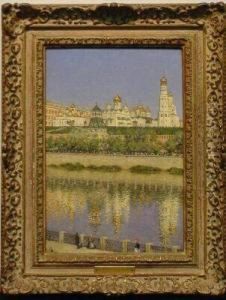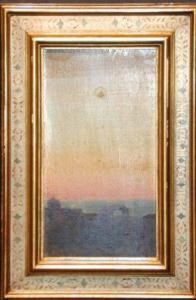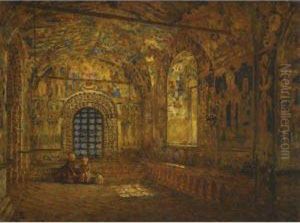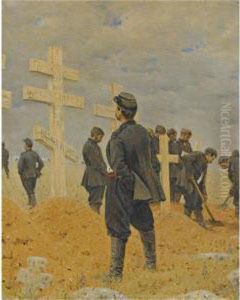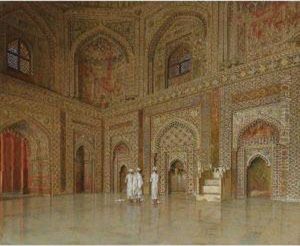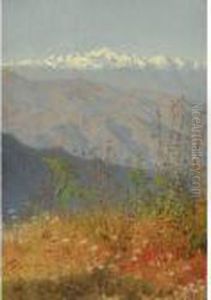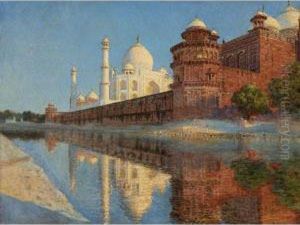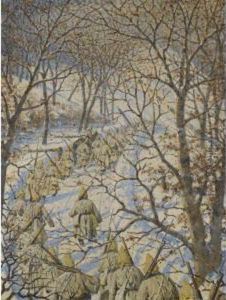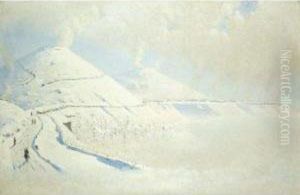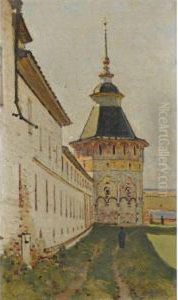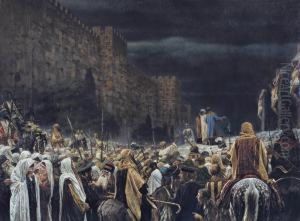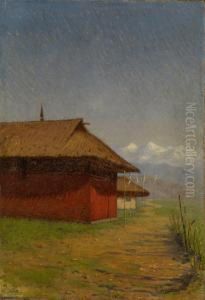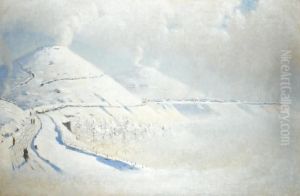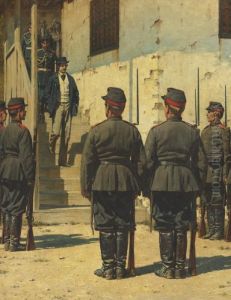Vasily Vasilievich Vereschagin Paintings
Vasily Vasilievich Vereschagin was a prominent Russian artist, renowned for his war scenes and depictions of military life. Born on October 26, 1842, in Cherepovets, Russia, Vereschagin was part of a noble family. He initially embarked on a military career, enrolling in the Cadet Corps and later attending the Naval Academy. However, his passion for art led him to abandon his military pursuits in favor of studying painting. He attended the Academy of Arts in Saint Petersburg and furthered his studies in Paris under the tutelage of Jean-Léon Gérôme, a well-known French painter.
Vereschagin's experiences in the military deeply influenced his artistic work, leading him to create some of the most vivid and impactful war paintings of the 19th century. He was known for his intense realism and the portrayal of the harsh realities of war, often focusing on the suffering of soldiers and civilians alike. This approach was not always well-received, as his works sometimes faced criticism for their graphic content and anti-war sentiment.
Besides war scenes, Vereschagin also painted a significant series of works based on his travels in Central Asia, showcasing the culture, people, and landscapes of the region. These works were praised for their ethnographic accuracy and artistic beauty.
Vereschagin's commitment to portraying the truth of war led him to the front lines of several conflicts, including the Turkestan series during the Russian conquest of Central Asia and the Balkan series during the Russo-Turkish War. His dedication to showing the realities of conflict often put him in danger, but it also allowed him to capture the essence of war in a way few artists could.
Despite his focus on war, Vereschagin's work is often noted for its humanitarian message. He was deeply critical of the glorification of war and sought to reveal its horrors through his art. This perspective was controversial at the time and provoked discussions on the role of art in society and the responsibility of the artist to reflect the truth.
Vasily Vereschagin died on April 13, 1904, in the Sea of Japan, when the ship he was traveling on, the Petropavlovsk, hit two mines and sank. His death was a significant loss to the art world, but his legacy lives on through his powerful and evocative works, which continue to be studied and admired for their artistic merit and profound commentary on the human condition.
